Swimming goggles are an essential piece of equipment for anyone who enjoys swimming. They not only help protect your eyes from chlorine and other chemicals in the water but also provide clear vision underwater.
How to choose swimming goggles?
Here are some factors to consider when choosing swimming goggles:
- Type of goggles: There are different types of swimming goggles such as recreational, training, racing, and open water goggles. Each type is designed for specific activities, so it’s important to choose the right one for your needs.
- Fit: The fit of the goggles is crucial. They should fit snugly around your eyes but not be too tight or uncomfortable. Look for goggles that have adjustable straps and nose bridges to ensure a comfortable and secure fit.
- Lens type: There are three types of lenses to choose from – clear, tinted, and mirrored. Clear lenses are suitable for indoor swimming, tinted lenses are great for outdoor swimming, and mirrored lenses are ideal for bright sunny days.
- Anti-fog and UV protection: Look for goggles that have anti-fog coating to prevent fogging and UV protection to shield your eyes from harmful UV rays.
- Brand and price: There are many brands of swimming goggles available at different price points. Choose a reputable brand that has good reviews and fits within your budget.
Overall, it’s important to try on different types of swimming goggles and find the one that fits comfortably, has the features you need, and suits your swimming needs.
How to choose swimming goggles: Type of goggles
When choosing swimming goggles, it’s important to consider the type of goggles that will best suit your needs.
Here are some common types of swimming goggles:
Recreational goggles:
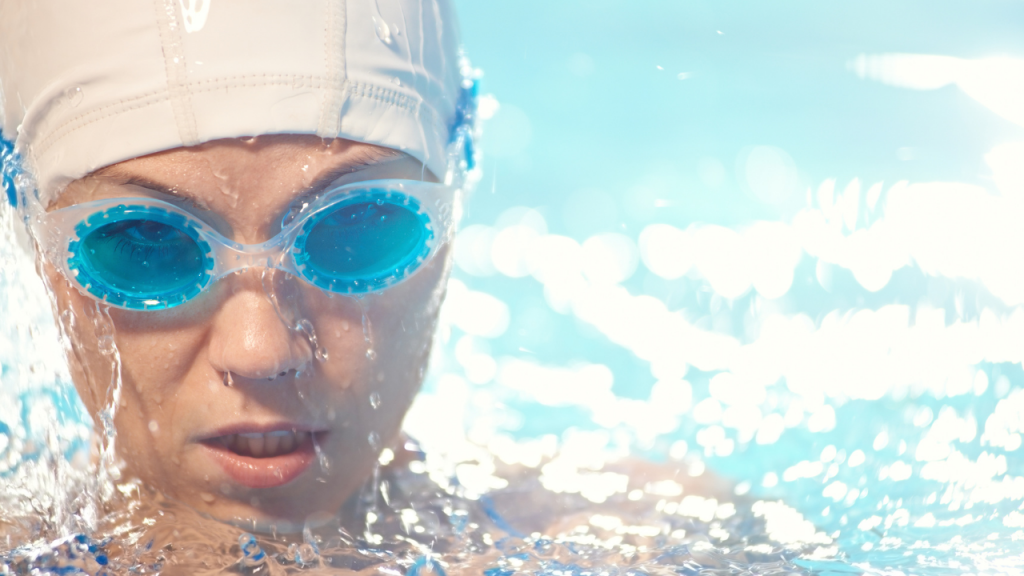
These are the most basic type of goggles, designed for casual swimming or recreational use. They are usually made of soft silicone and have a simple design.
They come in a range of colors and are often more affordable than other types of goggles.
Training goggles:
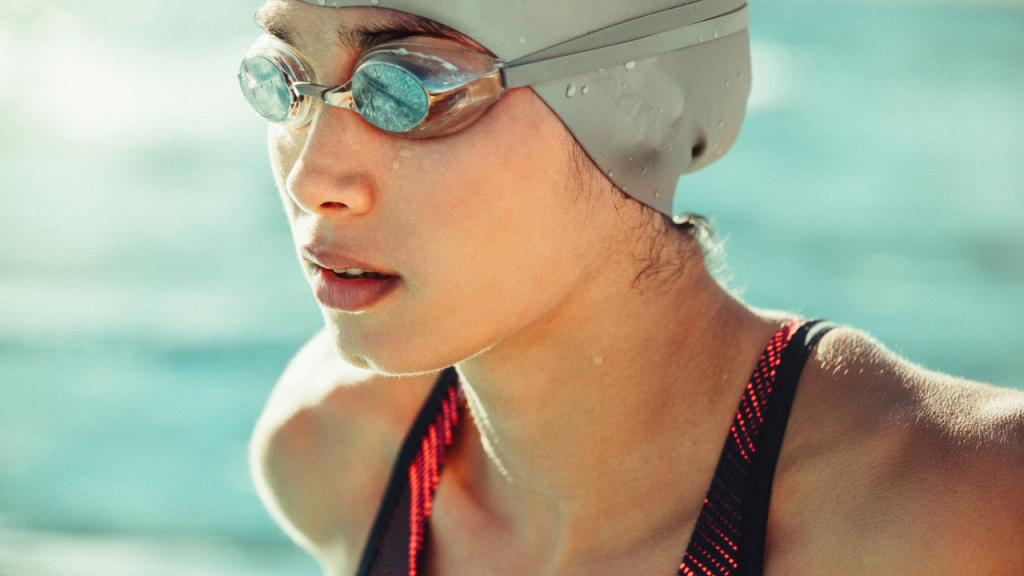
These are designed for swimmers who are training regularly and need a more durable and comfortable pair of goggles.
They often have a more advanced design with features such as larger lenses for a wider field of vision, anti-fog coating, and adjustable nose bridges and straps for a secure fit.
Racing goggles:
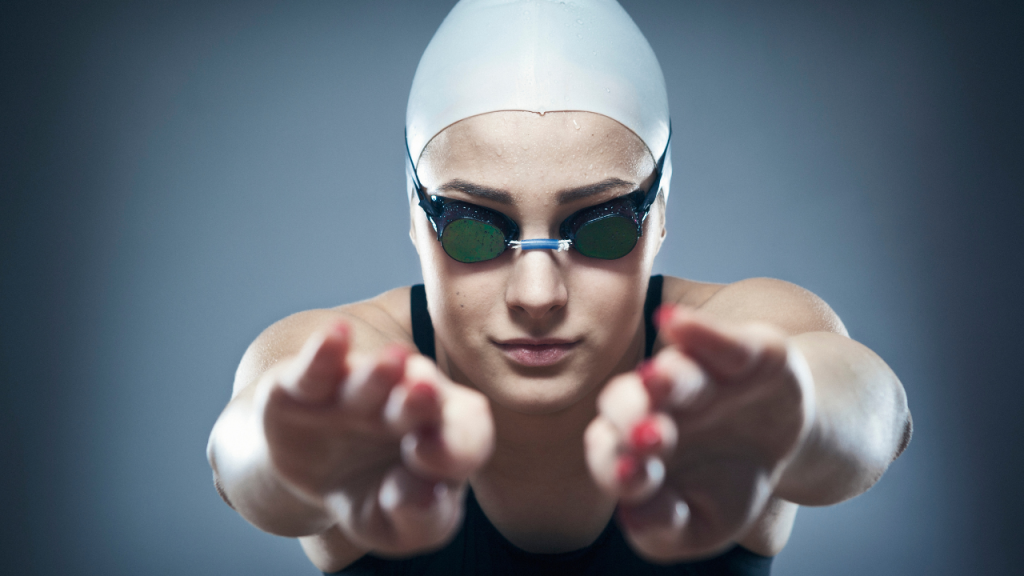
These are designed for competitive swimmers who need the best possible performance.
They are often streamlined with a low profile, which reduces drag and allows swimmers to move faster through the water. Racing goggles usually have mirrored lenses to reduce glare and improve visibility.
Open water goggles:
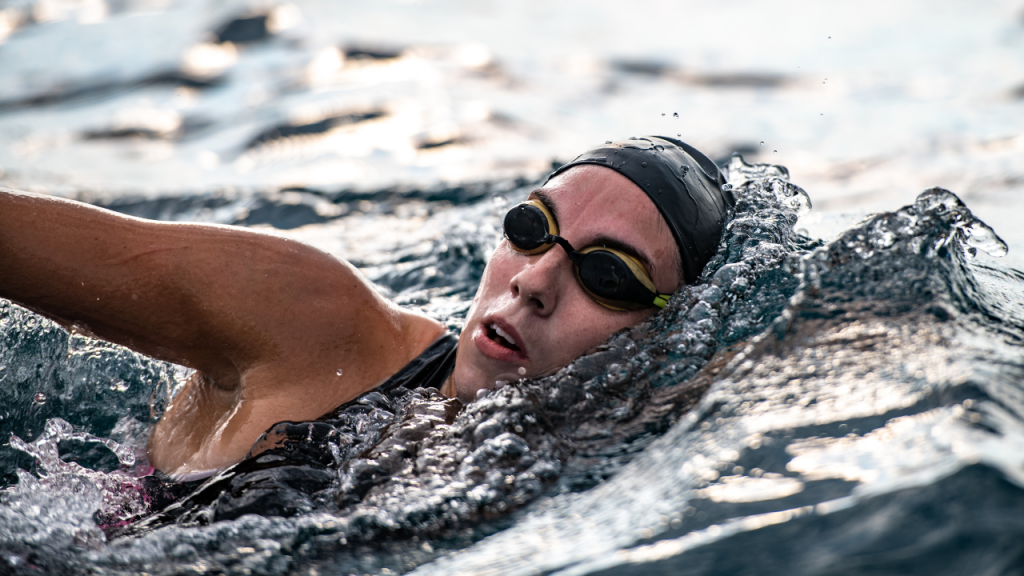
These are designed for swimmers who swim in open water such as the ocean or a lake.
They are often larger and have wider lenses for improved peripheral vision. They also have a comfortable and secure fit to prevent water from getting into the goggles.
When choosing the type of swimming goggles, consider your swimming needs and how often you swim. If you’re a casual swimmer, recreational goggles may be suitable.
However, if you’re a competitive swimmer, racing goggles may be a better option. If you’re swimming in open water, then open-water goggles will provide the best protection and comfort.
How to choose swimming goggles: Fit
Choosing swimming goggles with the right fit is essential for comfort, performance, and safety in the water.
Here are some tips to help you choose goggles with the right fit:
- Eye socket size: Consider the size and shape of your eye sockets when choosing goggles. Some goggles are designed for narrow or wide eye sockets, while others have a universal fit. Look for goggles with a comfortable and snug fit around your eyes without feeling too tight.
- Nose bridge: Choose goggles with an adjustable nose bridge, so you can customize the fit to your face. The nose bridge should sit comfortably on your nose without causing any discomfort or pressure.
- Straps: Look for goggles with adjustable straps, so you can customize the fit around your head. The straps should fit snugly but not be too tight, causing discomfort or leaving marks on your skin.
- Suction: Press the goggles against your eyes without using the straps to test the suction. The goggles should create a suction seal without causing discomfort or pain.
- Comfort: Make sure the goggles are comfortable to wear and don’t cause any irritation or discomfort. Try the goggles on for a few minutes to see how they feel and adjust them as needed.
Remember that finding the right fit can take some trial and error.
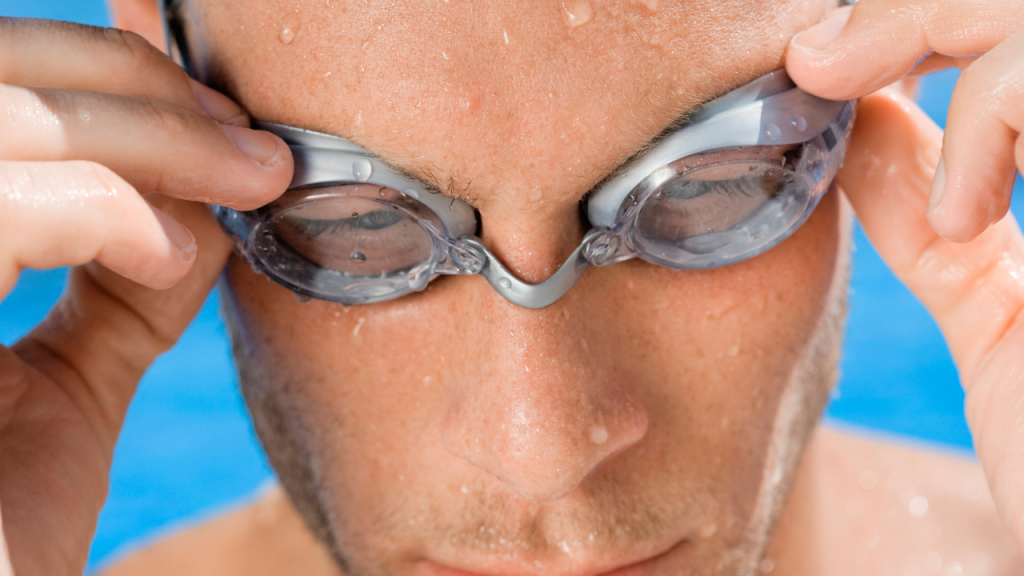
Try on different styles and brands of goggles until you find a pair that fits comfortably and securely on your face.
It’s also important to adjust the goggles before each swim to ensure they are still fitting properly.
How to choose swimming goggles: Lens type
Choosing the right lens type for your swimming goggles is important for optimal vision and comfort. Here are some common lens types to consider:
- Clear lenses: Clear lenses are suitable for indoor swimming or low light conditions. They allow maximum light to pass through, providing a clear and unobstructed view.
- Tinted lenses: Tinted lenses are great for outdoor swimming, especially in bright or sunny conditions. They reduce glare and provide better visibility in bright light, which can help you see the lane lines and other swimmers more easily.
- Mirrored lenses: Mirrored lenses are similar to tinted lenses, but they have a reflective coating that reduces glare even more. They are great for bright sunny days and can also add a stylish look to your goggles.
- Polarized lenses: Polarized lenses are designed to reduce glare and improve visibility in the water. They are ideal for outdoor swimming and can also help reduce eye strain and fatigue.
When choosing the lens type, consider the conditions you’ll be swimming in and your personal preference.
If you mostly swim indoors or in low light conditions, clear lenses may be the best option. If you swim outdoors in bright or sunny conditions, tinted or mirrored lenses may be better.
If you have sensitive eyes or experience eye strain, polarized lenses may be a good choice.
It’s important to note that some swimming goggles have interchangeable lenses, allowing you to switch between different lens types depending on the conditions. This can be a great option if you swim in a variety of different environments.
How to choose swimming goggles: Anti-fog
Choosing swimming goggles with an anti-fog feature is important for clear vision and overall comfort during your swim. Here are some things to consider when looking for goggles with anti-fog capabilities:
- Coating: Look for goggles with an anti-fog coating on the inside of the lenses. This coating prevents water vapor from forming on the lenses, which can obstruct your vision.
- Material: Some materials, such as polycarbonate, are naturally more resistant to fogging. Look for goggles made of these materials for better anti-fog performance.
- Maintenance: Proper maintenance of your goggles can also help prevent fogging. After each swim, rinse your goggles with clean water and avoid touching the inside of the lenses. Store them in a cool, dry place and avoid leaving them in direct sunlight or in a hot car.
- Avoid touching the inside of the lens: Touching the inside of the lenses can transfer oils from your skin, which can cause fogging. If you need to adjust your goggles, use the straps or nose bridge to avoid touching the lenses.
When choosing swimming goggles, consider the anti-fog features and how they will help you maintain clear vision during your swim. It’s also important to follow proper maintenance techniques to keep your goggles in good condition and prevent fogging.
Choosing swimming goggles: UV protection
Choosing swimming goggles with UV protection is important to protect your eyes from harmful UV rays while swimming outdoors. Here are some things to consider when looking for goggles with UV protection:
- Look for goggles labeled as “UV protection”: Goggles that offer UV protection will usually be labeled as such on the packaging or product description. Look for goggles with a high level of UV protection, such as 100% protection against UVA and UVB rays.
- Tinted or mirrored lenses: Tinted or mirrored lenses not only reduce glare, but they can also provide additional UV protection. Look for lenses that are specifically designed to block UV rays.
- Polarized lenses: Polarized lenses can also help reduce the amount of UV rays that reach your eyes, making them a good choice for outdoor swimming.
- Fit and comfort: As with all swimming goggles, it’s important to choose goggles with a comfortable and secure fit to prevent water from leaking in and around the goggles. Goggles with a tight seal will also help protect your eyes from UV rays.
When choosing swimming goggles, it’s important to prioritize UV protection, especially if you swim outdoors frequently.
Look for goggles that offer high levels of UV protection, and consider lenses that are designed specifically to block UV rays.
Additionally, make sure that the goggles fit well and are comfortable to wear to ensure maximum protection and enjoyment while swimming.
Choosing swimming goggles: Best brands
There are many different brands of swimming goggles available on the market, each with its own features, styles, and price points. Here are some of the best brands of swimming goggles:

Speedo:
Speedo is a well-known brand in the swimming world and is known for producing high-quality swimming gear, including goggles.
They offer a wide range of goggles for different types of swimming activities, and their goggles are often used by competitive swimmers.

TYR:
TYR is another popular brand that produces high-quality goggles for swimmers of all levels.
They offer a variety of styles, including racing goggles, open water goggles, and recreational goggles.
Arena:

Arena is a popular brand among professional swimmers and produces goggles that are designed for performance and comfort.
They offer a range of goggles for different types of swimming activities, including racing, training, and open-water swimming.

Aqua Sphere:
Aqua Sphere is a brand that specializes in producing goggles and other swim gear.
Their goggles are designed for comfort, with features such as curved lenses for better visibility and adjustable straps for a secure fit.
Zoggs:

Zoggs is a brand that produces goggles for swimmers of all levels, from beginners to professionals. They offer a range of styles, including polarized lenses and mirrored lenses, and their goggles are often praised for their comfort and durability.
When choosing swimming goggles, it’s important to consider your personal needs and preferences, as well as your budget.
Look for brands that have a good reputation for producing high-quality goggles that are comfortable, durable, and offer the features that you need for your particular swimming activities.
Choosing swimming goggles: prices
When choosing swimming goggles, the price range can vary widely depending on the brand, type, and features. Here is a general breakdown of the price range for swimming goggles:
- Recreational goggles: These are the most affordable type of goggles, typically ranging from $10 to $30.
- Training goggles: These goggles are often mid-range in price, ranging from $20 to $50.
- Racing goggles: Racing goggles are typically the most expensive type of goggles, ranging from $30 to $70 or more.
- Open water goggles: The price range for open water goggles can vary widely, but they are often mid-range to high-end in price, ranging from $20 to $60 or more.
The price of goggles can also depend on specific features, such as anti-fog coating, UV protection, and interchangeable lenses.
Goggles with more advanced features will generally cost more than basic goggles.
Additionally, some brands may be more expensive than others, depending on their reputation and the quality of their products.
Table: Swim goggles brands and models comparison
Here’s a table that summarizes the information on swim goggles brands and models, types, features, and prices:
| Brand | Model | Type | Features | Price |
|---|---|---|---|---|
| Speedo | Vanquisher 2.0 | Racing | Anti-fog, UV protection, mirrored lenses, interchangeable nose pieces, low profile design | $20 – $25 |
| Speedo | Hydrospex Classic | Recreational | Anti-fog, UV protection, durable construction, easy-adjust straps, comfortable fit | $15 – $20 |
| Speedo | Hydrosity | Training | Anti-fog, UV protection, soft silicone gasket, easy-adjust strap, comfortable fit | $15 – $20 |
| TYR | Tracer Racing | Racing | Anti-fog, UV protection, low profile design, adjustable nose bridge, wide peripheral vision | $25 – $30 |
| TYR | Nest Pro Nano | Training | Anti-fog, UV protection, adjustable nose bridge, unibody design, wide peripheral vision | $20 – $25 |
| TYR | Special Ops 2.0 Polarized | Open Water | Anti-fog, UV protection, polarized lenses, adjustable nose bridge, low profile design | $30 – $35 |
| Arena | Cobra Ultra Mirror | Racing | Anti-fog, UV protection, mirrored lenses, adjustable nose bridge, low profile design | $40 – $50 |
| Arena | Tracks Mirror | Training | Anti-fog, UV protection, mirrored lenses, soft silicone gaskets, easy-adjust strap | $20 – $30 |
| Arena | Swedix Mirror | Recreational | Anti-fog, UV protection, mirrored lenses, classic Swedish goggle design, easy-adjust strap | $20 – $30 |
| Aqua Sphere | Kayenne | Open Water | Anti-fog, UV protection, curved lenses for wide vision, comfortable fit, easy-adjust buckle | $25 – $30 |
| Aqua Sphere | Kaiman | Recreational | Anti-fog, UV protection, 180-degree panoramic vision, easy-adjust buckles, comfortable fit | $15 – $20 |
| Aqua Sphere | Vista Pro | Training | Anti-fog, UV protection, wraparound design for wide vision, interchangeable nose bridges, comfortable fit | $40 – $50 |
Note that the prices listed are approximate and may vary depending on the specific model and retailer.
Additionally, these are just a few examples of the many swim goggles models available from these brands. When choosing swim goggles, consider the type, features, and price that best suit your needs and budget.
How to choose swimming goggles? Additional tips
Here are some additional tips to help you choose the best swimming goggles:
- Consider the size and shape of your face: Different goggles may fit different face shapes and sizes better than others. Look for goggles that are designed to fit your face shape and size, or try on a few different styles to find the best fit.
- Try before you buy: It’s important to try on goggles before you buy them to make sure they fit comfortably and securely. If possible, try them on in the water to get a better sense of how they feel while swimming.
- Look for adjustable features: Adjustable straps and nose bridges can help you customize the fit of your goggles and ensure a comfortable and secure fit.
- Read reviews: Before making a purchase, read reviews from other swimmers to see what they like and dislike about the goggles you’re considering.
- Consider the warranty: Some brands offer warranties on their goggles, which can give you peace of mind and protect your investment.
By keeping these additional tips in mind, you can make a more informed decision when choosing swimming goggles and ensure that you have a comfortable and clear swim.
Which models of swim goggles are used by famous professional swimmers?

Professional swimmers often use a variety of swim goggles depending on their personal preferences and the specific needs of their training or competition. However, some of the most popular models used by famous professional swimmers include:
Speedo Fastskin3 Elite: This is a racing goggle that features a hydrodynamic design, a low-profile lens, and a unique seal that conforms to the shape of the swimmer’s face.
It has been used by many professional swimmers, including Olympic gold medalist Michael Phelps.

TYR Tracer Racing: This is another popular racing goggle that features a sleek design, adjustable nose bridge, and wide peripheral vision.
It has been used by swimmers such as Ryan Lochte and Katie Ledecky.

Arena Cobra Ultra: This is a racing goggle that features a low-profile design, anti-fog lenses, and a customizable fit.
It has been used by Olympic swimmers such as Adam Peaty, Chad le Clos and Sarah Sjostrom.
MP Michael Phelps Xceed: This is a racing goggle that was designed in collaboration with Olympic swimmer Michael Phelps.

It features a curved lens for optimal peripheral vision, an adjustable nose bridge, and a comfortable fit. It has been used by professional swimmers such as Katinka Hosszu and Ariarne Titmus.
It’s important to note that while these models have been used by famous professional swimmers, the best swim goggles for you may differ based on your own needs and preferences.
Accessories for swim goggles
There are several accessories that you can consider when purchasing swim goggles. Here are some popular options:
- Goggle Case: A goggle case is a protective case designed to store and transport your swim goggles. It can help protect your goggles from scratches and damage, and keep them clean and organized.
- Anti-Fog Spray: Anti-fog spray is a liquid solution that can be applied to the inside of your goggles to prevent fogging. It’s a good option if your goggles don’t have an anti-fog coating or if you need extra protection against fogging.
- Nose Clips: Nose clips are small devices that can be attached to the bridge of your nose to help keep water out of your nose while swimming. They can be a useful accessory if you experience discomfort or irritation from water entering your nose.
- Ear Plugs: Ear plugs can be used to keep water out of your ears while swimming. They can be especially helpful if you are prone to ear infections or if you have sensitive ears.
- Replacement Straps and Nose Bridges: Over time, the straps and nose bridges on your goggles can wear out or break. Replacement straps and nose bridges are available for many goggles and can help extend the life of your goggles.
When choosing accessories for your swim goggles, consider your personal needs and preferences, as well as the specific features of your goggles. Some accessories may only be compatible with certain types or brands of goggles, so be sure to check compatibility before making a purchase.
How long do swim goggles last?
The lifespan of swim goggles can vary depending on factors such as the quality of the goggles, the frequency of use, and how well they are maintained. On average, swim goggles can last anywhere from a few months to a year or more.
If you use your swim goggles frequently or for extended periods of time, they may wear out faster than if you only use them occasionally. Exposure to chlorine and other chemicals in the pool water can also cause the goggles to degrade over time.
To extend the life of your swim goggles, it’s important to take proper care of them. Rinse them with clean water after each use and avoid touching the lenses with your fingers, as this can leave oils and residues that can degrade the anti-fog coating.
Store your goggles in a protective case and avoid exposing them to extreme temperatures or direct sunlight.
If you notice signs of wear or damage on your swim goggles, such as a loose strap or a cracked lens, it’s time to replace them. Continuing to use damaged goggles can compromise your vision and put your eyes at risk of injury.
Wrap up
To summarize, here are the key factors to consider when choosing swimming goggles:
Type: Consider the type of swimming you’ll be doing and choose goggles that are designed for that activity.
Fit: Look for goggles that fit comfortably and securely on your face, without being too tight or too loose.
Lens type: Choose lenses that are appropriate for the lighting conditions of your swimming environment, and consider the benefits of different types of lenses, such as polarized or mirrored lenses.
Anti-fog: Look for goggles with an anti-fog feature to prevent water vapor from obstructing your vision.
UV protection: Choose goggles with UV protection to protect your eyes from harmful UV rays, especially if you swim outdoors.
Brand and price: Consider the reputation of different brands and the price range that fits your budget.
Remember to try on the goggles before you buy them, and make sure to follow proper maintenance techniques to keep them in good condition. With these factors in mind, you can choose the best swimming goggles for your needs and enjoy a comfortable and clear swim.

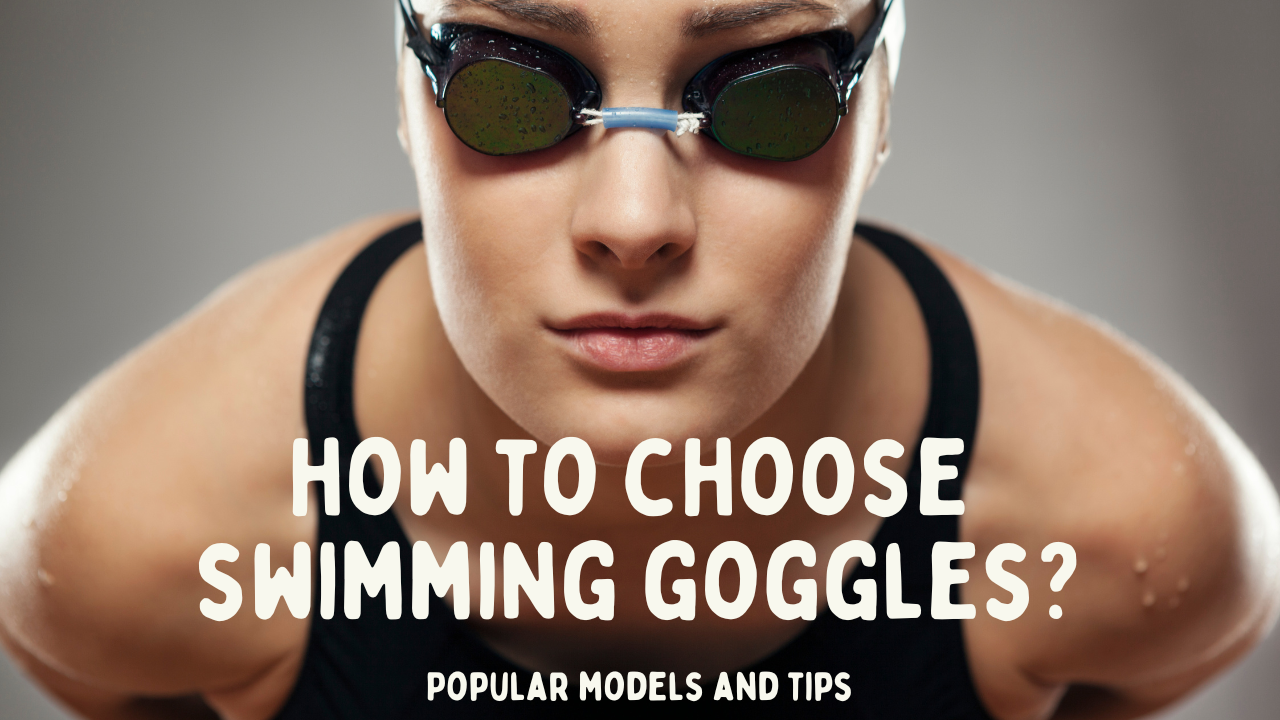
Leave a Reply